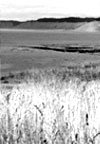| |
|
 |
 |
 |
|||
 |
|||||
 M
MPark Specific Objectives M Research Support Facilities M Relevant Fields of Study M Recent Case Studies M Contact Info |
 |
Synopsis: M San Juan Island National Historical Park, established in 1966, comprises 1,752 acres, and preserves the sites of the American and English camps on the island (Figure 8). The park commemorates the historic events that occurred from 1853 to 1871 on the island in connection with the final settlement of the Oregon Territory boundary dispute, including the Pig War of 1859. The park is the largest public open space on San Juan Island. In addition to the historical buildings and features at both camps, the park contains important prehistoric Indian sites. Natural resources within the park are varied and include: 6.1 miles of shoreline and intertidal habitat; 92 acres of wetlands, including 3 marine lagoons; 900 acres of grassland, which supports varied raptor and songbird populations; a slightly smaller acreage of largely second-growth fir, cedar and maple forests and Garry oak woodland. Impacts from logging, grazing and cultivation are evident at both camps, but small pockets of old growth forest remain. Exotics abound, especially at American Camp. |
|||
|
|
|||||
|
The spread and distribution of exotic plants and animals are a major concern. Exotic plant invasions are encouraged by the burrowing activities of exotic European rabbits. The elimination of ground-nesting birds is linked to the activities of feral cats and introduced red foxes. Inventories are needed to determine the distribution of exotic plants and animals. Information is also needed on vectors of spread of exotics so that preventative measures can be initiated. As the largest natural area on the island, the park is subject to ever-increasing pressures from near-park development, increasing visitation, and different kinds of recreational uses. Inventories are needed to determine if listed and sensitive plant and animal populations are present that might be impacted by these activities. It is not known whether the park contains any listed plant species, such as the golden paintbrush, that have been documented elsewhere on the island. Habitat for the listed marbled murrelet habitat has been located in the park, but no surveys have been conducted to determine they are present. No other listed bird or mammal species are thought to be present in park. Management has also identified a need for a park plant checklist for visitors that could be developed as a product of a completed plant inventory. Little is known about the reptile and amphibian populations in the park or whether there are any listed species present. Park-specific inventories need to be conducted to fill in this information gap. (top of page) |
|||||
|
|
|||||
|
For a nominal fee, during the fall, winter, and early spring months, bunkhouse or apartment space is available in park facilities at Port Angeles, Elwha, Kalaloch, or Mora. Park staff operate a wet lab at Lake Crescent; subject to other work underway at the time, this facility may be available to cooperating researchers. Entrance, backcountry camping, and parking fee waivers are also available for approved research. Year round, researchers may reserve dormitory, apartment, and lab space in Forks on the campus at the University of Washington Olympic Natural Resources Center (see http://www.onrc.washington.edu). (top of page) |
|
||||
| Air Resources Biology Fire Ecology Geology Historical Studies Paleoecology (top of page) |
|
Plant Ecology Restoration Ecology Social Science Wilderness Management Wildlife Ecology |
|||
|
|
|||||
Genetics, Demography, and Movement of Olympic Marmots Suzanne Cox Griffin, L. Scott Mills, Ph.D., Mark Taper, Ph.D.; University of Montana (top of page) |
|
||||
|
| |||||
Ebey's Landing National Historical Reserve 600 East Park Avenue Port Angeles, Washington 98362-6798 360-565-3000 www.nps.gov/ebla Inquiries and research permit applications should be directed to: Bill Gleason San Juan Island National Historical Park P.O. Box 429 Friday Harbor, Washington 98250 (360) 378-2240 bill_gleason@nps.gov (top of page) |
|||||
|
|
|
|
|
|
| Research & Park Stewardship > The Parks > Olympic N.P. | |